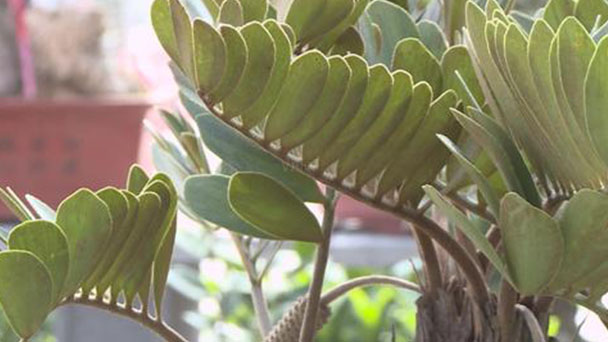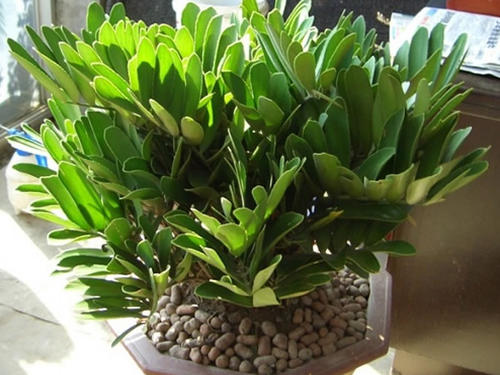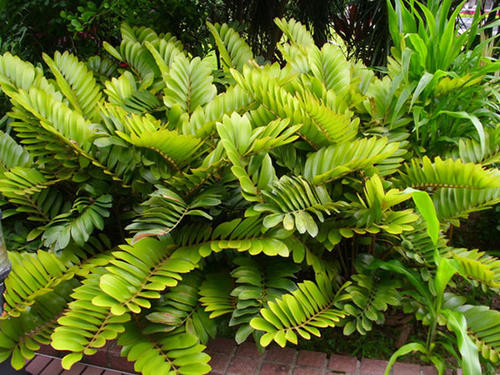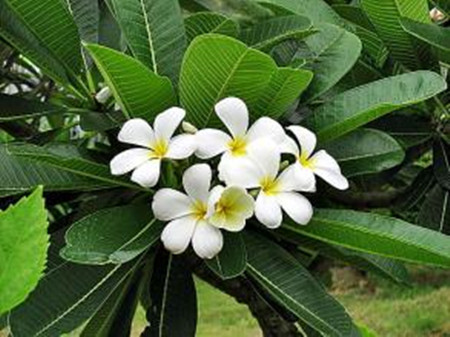Cardboard Palm (Zamia Furfuracea) Profile
Written by Maggie
Sep 15 2021

Cardboard Palm, also known as Zamia furfuracea, is a plant of the genus Zemironia, native to America and other places.
Cardboard Palm Picture

Cardboard Palm Morphological Characteristics
The height of cardboard palm is 15 ~ 20cm, single or rarely branched, sometimes fascicular, thick branches, cylindrical, with dense rows of dark brown leaf marks on the surface. At the base of the perennial stem, the buds can germinate and grow young buds, called succulent buds, and the underground is the fleshy whisker root system. Leaves of Cardboard Palm are large even pinnate compound leaves, born at the top of the stem, leaves 60 ~ 120cm long, hard leathery, petiole 15 ~ 20cm long, sparsely hard spines.
There are 7 to 12 pairs of pinnate leaflets in Cardboard Palm, which are long and elliptic, unequal on both sides, whole at the base 2/3, dense with small blunt serrations at the upper end, blunt and acuminate at the top, dorsal curling at the edge, without midrib. There are 40 parallel veins with obvious prominences on the back of Cardboard Palm leaves, reaching from the base to the tip. Dioecious, male inflorescences pines are globose, 10 -- 15cm long, female inflorescences palmate-like.
Cardboard Palm Ecologic Habit
Cardboard Palm likes warm, wet and sunny environments. Cardboard Palm has cold resistance, drought resistance. The optimum temperature for growth is 12 ~ 24℃ from spring to autumn, 13 ~ 16℃ from autumn to the following spring, and no less than 2℃ in winter. It is better to use fertile, loose and well-drained sandy loam.
Cardboard Palm Propagation
Cardboard palm can be propagated by sowing, dividing and sucking buds. Sowing with the on-demand method, covering soil about 3cm, easy to germinate at a high temperature of 30 ~ 33℃. Partition bud absorption propagation should be carried out in early spring in spring, cutting should be careful, as little as possible to hurt the stem bark, cut with plant ash or sulfur powder, after the cut is slightly dry, planted in the pot containing a lot of coarse sand humus soil, watering put half shade culture, the optimal temperature is maintained at 27 ~ 30℃, it is easy to survive.
Potted, basin bottom drainage hole slightly larger, and more pad tiles, for drainage. Spring and summer are the vigorous growth period of Cardboard Palm, to water, early and late to spray water in the foliage, keep the leaf green; When the scorching summer sun, the temperature is high, easy to put half shade, such as direct sunlight will make the leaf color yellow and lose luster. The root can be applied 1 ~ 2 times a month or foliar spray, after autumn to control the amount of water, so that the soil moisture.

Cardboard Palm Care
Potted soil commonly used leaf rot soil and coarse sand preparation of mixed soil, pot bottom should be more pad tile, in order to facilitate drainage and ventilation, conducive to root growth and development. Summer growth period, in addition to watering, sprinkle water 2 ~ 3 times a day, keep the leaves green. Avoid strong light exposure, otherwise it will make the leaf color of Cardboard Palm yellow and lose luster, and Cardboard Palm should be put half shade maintenance. Fertilizing once a month during the growing period. Replace the pot every 2 years 1 time, when the new pinnate compound leaf grows 2 rounds, the base leaf tends to age, the leaf turns yellow, should be cut off one by one. In the perennial old stem of the base of the stem, often germination buds, if not for reproduction, should be cut in time.
Cardboard Palm Disease & Pest Control
Disease Control
Cardboard Palm is prone to leaf spot damage and can be sprayed with 50% carbendazim WP 1000 times.
Pest Control
The Cardboard Palm pests include scale worms and root-knot nematodes. Scale insects can be sprayed with 50% malathion solution 1500 times, and root-knot nematodes can be controlled with soil fumigation nematode insecticide.
Cardboard Palm Distribution
Cardboard Palm originates in Mexico and Colombia.

Latest Updated
- Benefits of Bugleweed - 7 Science-backed Health Benefits
- Bugleweed Dangers & Side Effects - Is It Poisonous?
- How to Plant Evergreen Trees - What You Should Know
- When to Plant Evergreens - Grow Guide for Evergreen Trees
- 12 Wonderful Evergreen Shrubs for Your Garden
- 12 Popular Evergreen Plants with Pictures for Beginners
- When And How To Prune A Lilac Bush Like a Pro
- How to Grow & Care for Lilac Vine (Hardenbergia Violacea)
- Japanese Lilac Tree (Syringa Reticulata) Care & Propagation Guide
- Shumard Oak Pros and Cons - What to Know
Popular Articles
- Winter maintenance of Antirrhinum Majus
- How to Grow Terminalia Mantaly Tree
- How to Grow and Care for Crossostephium Chinense
- How to grow Antirrhinum Majus in spring
- Peristeria Elata (Dove Orchid) Profile: Info & Care Guide
- Underwatered Snake Plant (Sansevieria Trifasciata) - Signs And How To Fix
- How to Care for Brazilian Jasmine Plant (Mandevilla Sanderi)
- How to Grow & Care for Graptopetalum Purple Delight in Summer
- Rosa Chinensis (China Rose): Plant Growing & Care Tips
- How to Care for Baby Sun Rose (Aptenia Cordifolia)